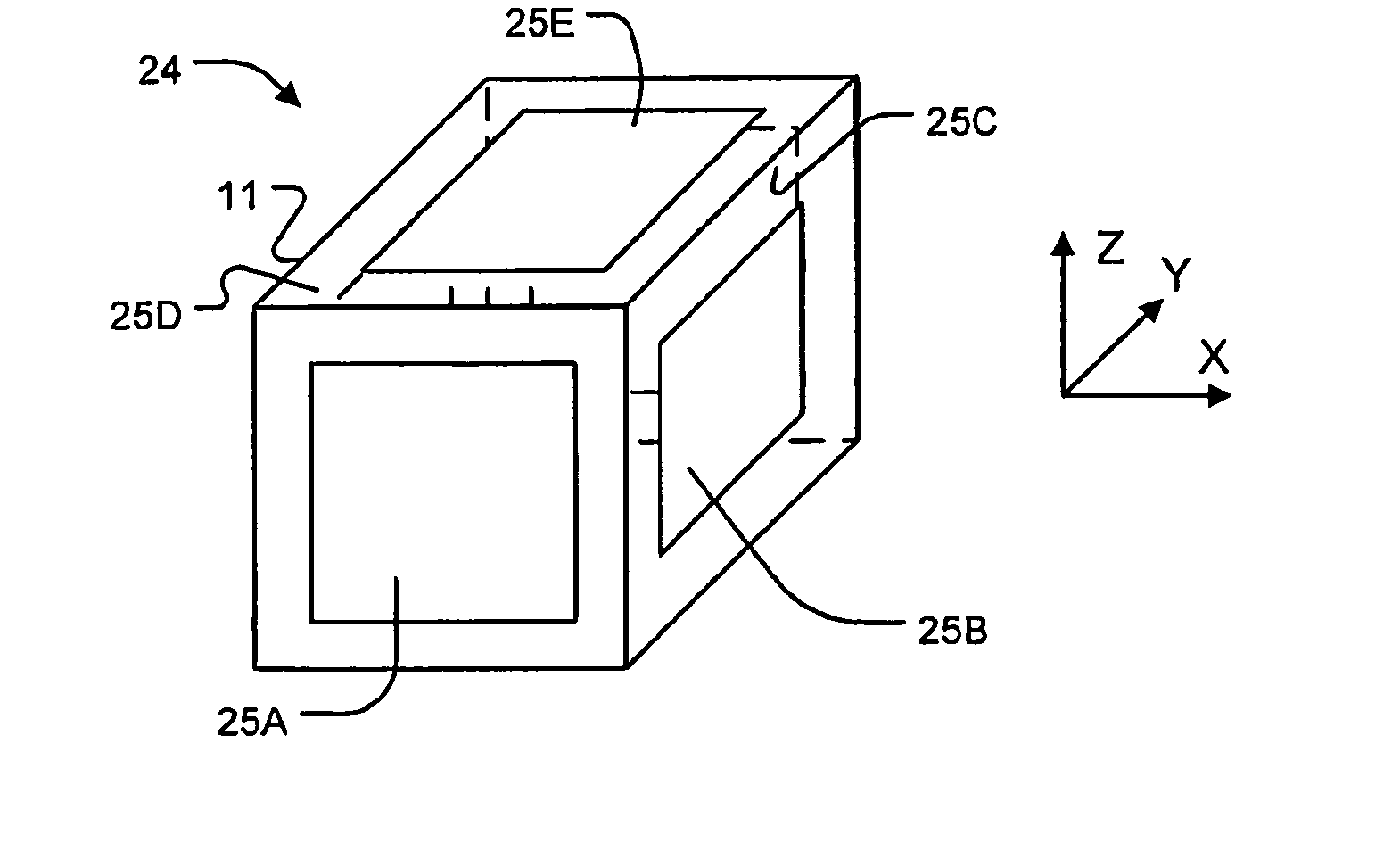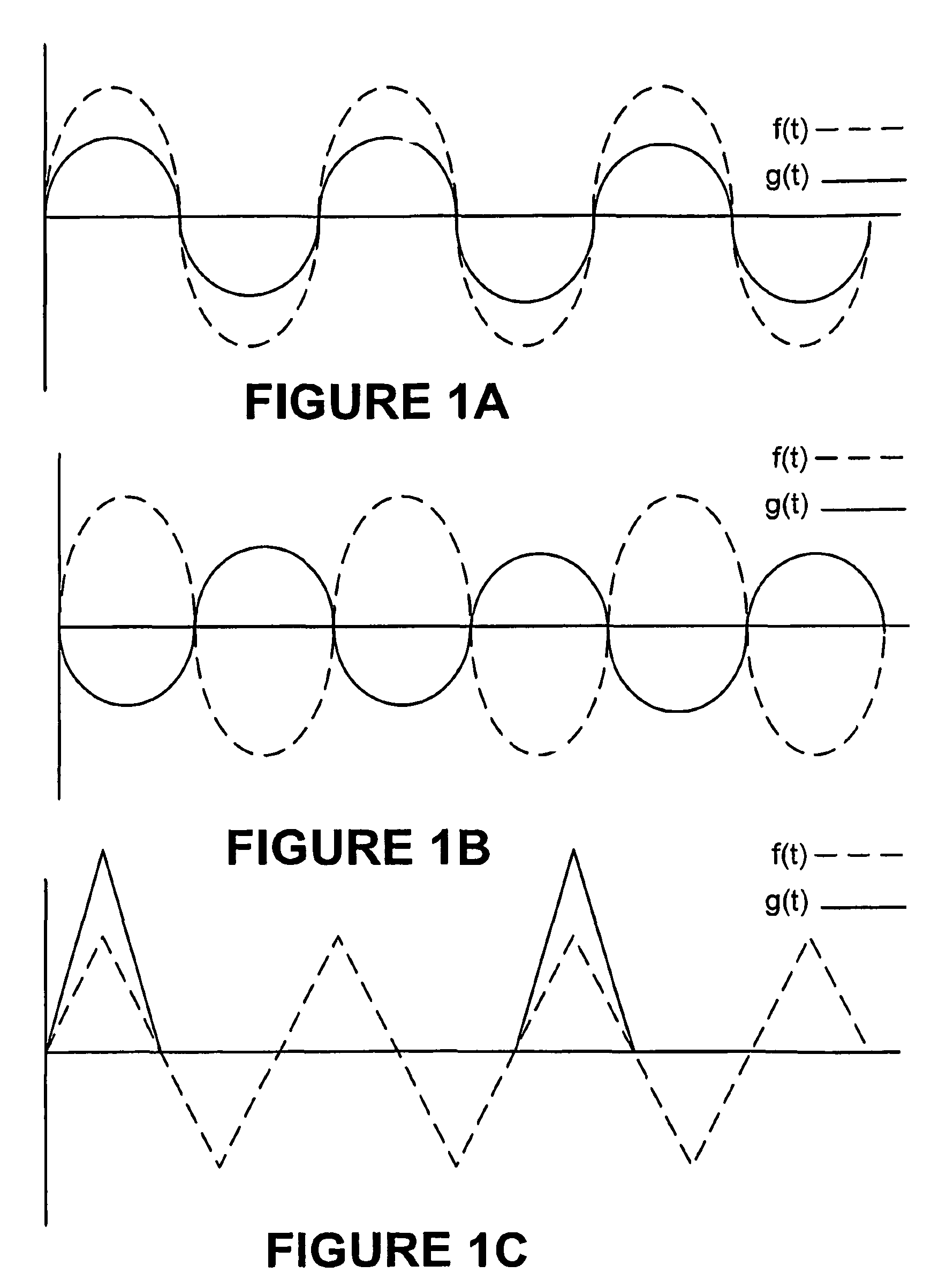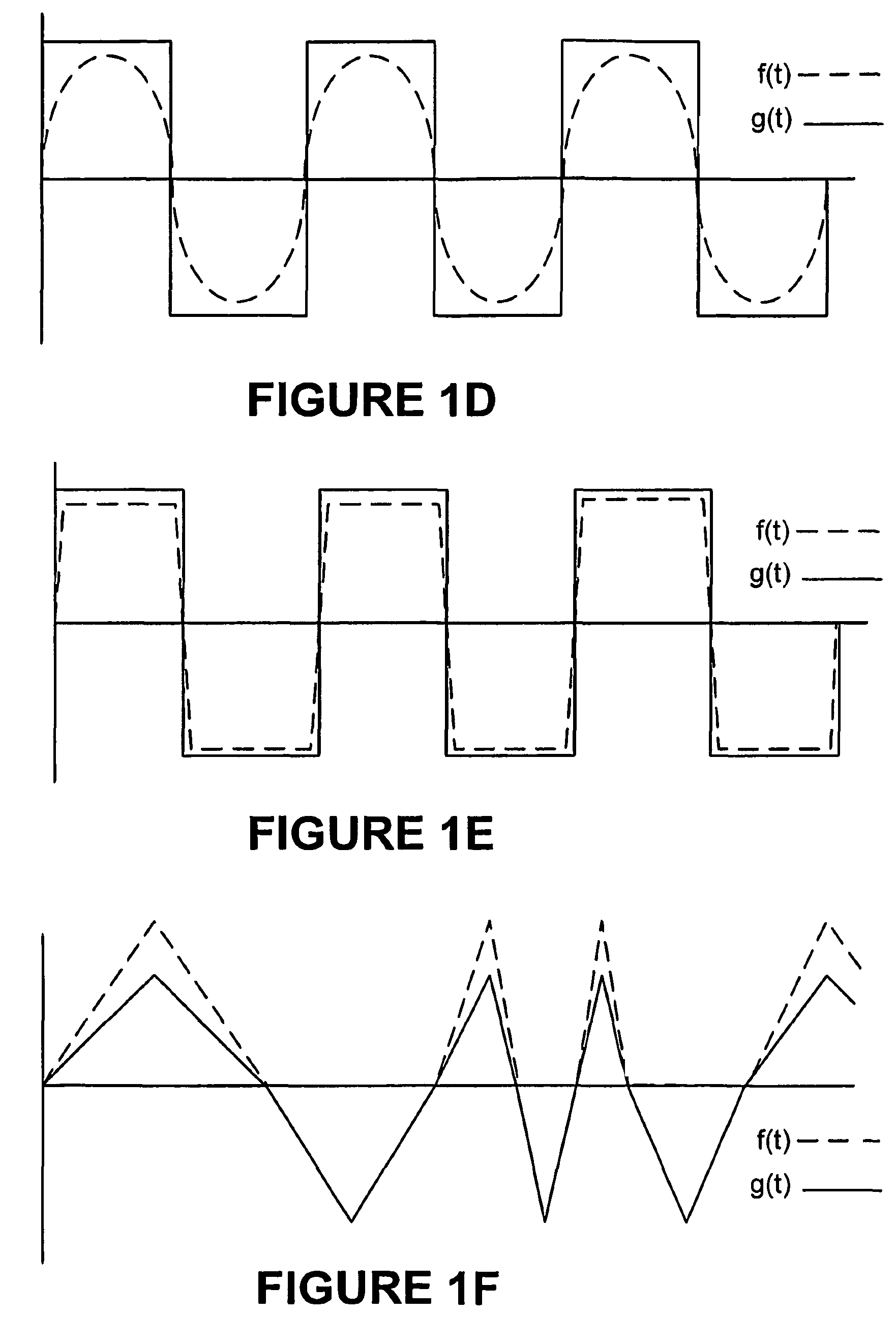Scodaphoresis and methods and apparatus for moving and concentrating particles
a technology of scodaphoresis and particle concentrating, which is applied in the direction of electrostatic separators, diaphragms, electrolysis, etc., can solve the problems of ineffective filtration technologies, laborious and/or expensive purification methods, and viruses or the like easily blocked with other debris
- Summary
- Abstract
- Description
- Claims
- Application Information
AI Technical Summary
Benefits of technology
Problems solved by technology
Method used
Image
Examples
example 1
Electrophoretic Concentration of Particles by SCODA
[0137]Consider an electrically charged particle that has an electrophoretic mobility, μ in an electric field given by {right arrow over (E)}=cos(ωt)EÊ, where Ê is a unit vector. By definition, the particle will move with a velocity given by:
{right arrow over (v)}=μ cos(ωt)E0Ê (9)
From Equation (9), {right arrow over (v)} has a time average of zero. If μ varies as a function of time and the Fourier transform of μ has a component proportional to cos(ωt) then the time average of v(t) may not be zero. As a simple example, consider the case where:
μ(t)=μ0+μ1 cos(ωt) (10)
In this case, the time average of v(t) is:
[0138]v_→=12μ1E0E^(11)
This demonstrates the basic principle that there can be a non zero electrophoretic drift even if the time average of the applied electric field is zero.
[0139]Now consider the case where the mobility of a particle is a function of electric field strength. While virtually any nonlinearity can be employed, co...
example 2
3D SCODA
[0174]FIG. 3C shows apparatus similar to that of FIG. 3 that has been modified by the provision of additional Z electrodes 22A and 22B. Z electrodes 22A and 22B are each maintained at a DC voltage. For negatively charged particles, Z electrodes 22A and 22B are kept more negative in potential than the 2D SCODA electrodes 12A, 12B, 12C, and 12D. The provision of the Z electrodes provides a focussing force in the Z axis, and a de-focussing force in the XY plane of medium 11. The defocussing force is counteracted by SCODA.
example 3
3D SCODA
[0175]FIG. 3D shows apparatus 24 according to an embodiment of the invention that provides 3D concentration of particles in a cube-shaped block of medium 11 by alternately performing SCODA using electrodes in XY, XZ, and YZ planes. For example, electrodes 25A, 25B, 25C, and 25D are used for concentration in the XY plane. Electrodes 25A, 25E, 25C and another electrode (not visible in FIG. 3D) on the side of medium 11 opposed to electrode 25E are used for concentration in the YZ plane. Electrodes 25B, 25E, 25D and the electrode opposed to electrode 25E are used for concentration in the XZ plane.
PUM
| Property | Measurement | Unit |
|---|---|---|
| electric field | aaaaa | aaaaa |
| voltages | aaaaa | aaaaa |
| size | aaaaa | aaaaa |
Abstract
Description
Claims
Application Information
 Login to View More
Login to View More - R&D
- Intellectual Property
- Life Sciences
- Materials
- Tech Scout
- Unparalleled Data Quality
- Higher Quality Content
- 60% Fewer Hallucinations
Browse by: Latest US Patents, China's latest patents, Technical Efficacy Thesaurus, Application Domain, Technology Topic, Popular Technical Reports.
© 2025 PatSnap. All rights reserved.Legal|Privacy policy|Modern Slavery Act Transparency Statement|Sitemap|About US| Contact US: help@patsnap.com



